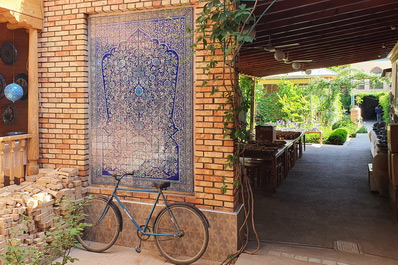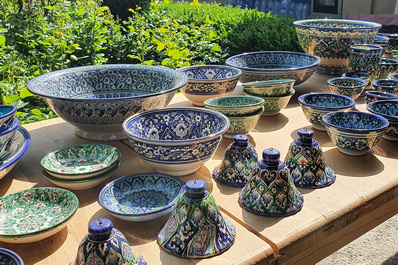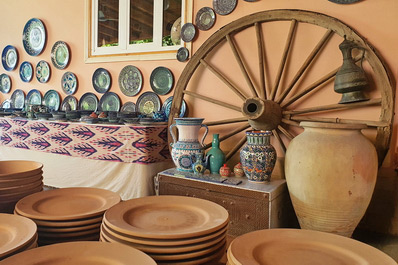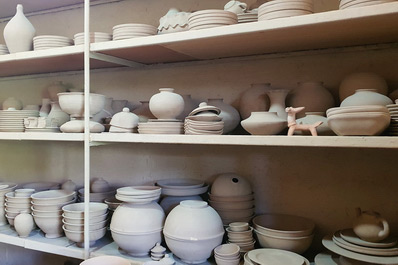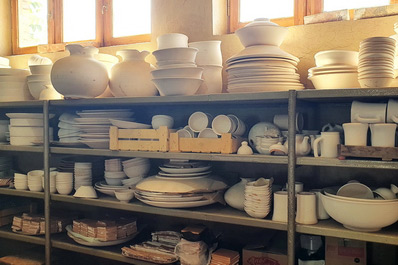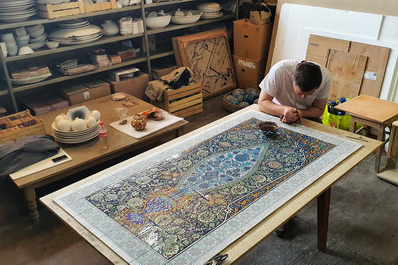Blue Ceramics of Rishtan: Workshop of Rustam Usmanov
Rishtan is the oldest center of ceramic art in Central Asia. The famous technique of glazed earthenware which local people use for their household needs and which is exported from the Fergana Valley was created here. It varies by shape, ornamentation and color. The most characteristic coloring of this earthenware (ceramic) is a turquoise, dark blue and brown scheme on a milky-white background. Ishkor glaze, made from ashes, gives the earthenware its beautiful soft shine.
The Rishtan ceramists' mastery of composition is inexhaustible. The paintings, which are done mostly in a freestyle manner, are based on direct observation of nature and reproduce the variation of surrounding world - flowers, branches, fruit, pitchers, knives, etc.
Today, as a thousand years ago, ceramics are painted by hand. The artist's individuality is manifested in a unique manner within the strict traditions of the folk art, an art style that developed over centuries.
Rustam Usmanov's art is in perfect harmony with these folk traditions. On graduation from the Tashkent Institute of Theatre and Art, he devoted much of his time to studying the old Rishtan ceramics through books and museum collections. It helped him enrich his knowledge of earthenware and gradually develop his own original style, freedom of composition and the technological skill oof his mastery. The mastery of his beautiful paintings and the richness of their pattern themes give a unique, hard-to-reproduce character to each of his works. They are some of the best pieces of Uzbekistan's decorative art.
Rustam Usmanov has built his own complete pottery studio at home. Mahmud Azizov, a skillful master of kuzagar, produces various forms on a moving pottery wheel, which Rustam and his relatives paint by hand.
Elnur Mursakayev, Rustam's nephew and apprentice, has already achieved his creative independence. The dynamic and energetic patterns, which complement the size and form of the item, prevail in his painting style, and lldar's and Damii's works show that they have already overcome amateur timidity. The maturity of their compositions and use of color bode well for their artistic futures.
The children, Asiya, Adelya, and Ruslan work together. They play and joke, trying to make their paintings different from the others'. A charming improvisation can be seen in their childish sincerity and of patterns and steady hands. The best works will remain in the family museum, because the family is hesitant to part with them. The most exciting moments come when it is time to open the kiln. The adults and children gather around, and appraise pieces which are still warm. This moment brings to Rustam that feeling of fullness and significance for which he lives and works.


